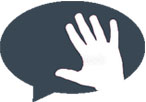Areas of Expertise
I am devoted to treating individuals with stuttering, speech, language, and voice problems. I also believe it is important to establish correct sound pronunciation skills in children as soon as their oral-physical and listening skills are ready for change. This readiness for change is determined through an evaluation in which the parent(s) and child participate.
Between ages 2-3, children’s vocabularies grow from a few words to a few hundred words, and they are speaking in short sentences and phrases. Approximately 80% of what they say at this age should be intelligible to their listeners. I work with children and their caregivers to facilitate language learning when it does not meet age-level expectations. By age 4, children should be speaking mainly in grammatically appropriate sentences which should have a topic and a sequence of related details that make sense to the listener. School-age children should be able to understand and follow directions and organize information read and heard so they can summarize the information verbally and in writing. Nursery school teachers and pediatricians are good people to ask when you are concerned about your child’s language development.
Stuttering
I have treated and supervised therapy for over 1000 stuttering clients, the majority of whom are now using fluent speech successfully in everyday speaking situations. Research studies that followed children’s speech development between the ages of two and six years report that approximately 25% of all children go through a period of stuttering at some point in their language development. Stuttering is a disruption in the fluency of verbal expression. A stuttering child may struggle to say many words, may repeat many times the first sound or syllable of a word or the whole word, may stretch sounds inappropriately like in the words aaaaaple or wheeeeen, and may precede words with facial grimacing or unexpected movements of the arms, legs or head. These disruptions usually occur frequently or are marked in character and are not readily controllable. If these types of speech behaviors persist for three to six months, then parents should consult a speech-language pathologist with experience treating stuttering. Therapy for stuttering is also successful with adults who have been stuttering for years.
Cluttering
Like stuttering, cluttering is a fluency disorder. Cluttering is characterized by disorganized speech that comes in bursts with frequent repetitions of words and phrases, frequent revisions of the message while it is being said, and a rapid speaking rate. The person may also collapse syllables in longer words, like saying “ferchly” in stead of “fortunately”. Fluency training programs work well in helping the person who clutters to develop fluent, intelligible speech.

Child with Attention Deficit Disorder
“While I’m trying to listen I can’t because my thoughts are chatting with my brain.”
– Anonymous

In 1973, I developed the Word Accuracy Articulation Program, which works on establishing correct production of several sound errors simultaneously. I believe it is important to establish correct sound pronunciation skills in children as soon as their oral-physical and listening skills are ready for making and hearing sound changes, usually between the ages of 4 and 6 years. This readiness for change is determined through a speech evaluation in which the parent(s) and child participate. By age 3 years, 75 – 80% of a child’s speech should be intelligible to listeners. Nursery school teachers and pediatricians are good people to ask about pursuing a speech evaluation when your child’s speech clarity worries you.For children with more severe phonological problems, such as apraxia, where a child’s speech is mostly unintelligible and he or she has a difficult time imitating sounds and oral gestures, I use programs such as PROMPT and Kaufman Speech Praxis Treatment for children to help establish oral motor bases for speech development.
Language Development
By age 4 years, children should be speaking mainly in grammatically appropriate sentences. They should be able to establish a topic for discussion and state details, related to the topic, that make sense to a listener. There are language programs that help children learn to express themselves in a grammatical and cohesive fashion. School-age children should be able to understand and follow directions and organize information heard or read so they can summarize the information verbally and/or in writing. Evaluation of a child’s difficulty in these areas is helpful for determining the magnitude of the problem and for making a plan for remediation.
Voice
People who are in professions where they use their voice continually, such as in teaching or selling, occasionally experience vocal strain and hoarseness. When hoarseness becomes chronic or continual, people should consult their physicians for a medical evaluation. If vocal cord nodules or polyps are diagnosed, and if they are small enough, voice therapy can often eliminate the nodules and polyps without the need for surgery. People also can learn strategies for keeping vocal cords healthy. Children may also develop patterns of vocal strain from loud talking, yelling, screaming, and cheerleading. People who have had neck surgery or who suffer from chronic or acute illnesses, such as Parkinson’s Diseases or a virus, may experience weakness or paralysis of a vocal cord. There are effective exercises that can give a person a stronger voice even after surgery or illness has affected vocal cord functioning.
